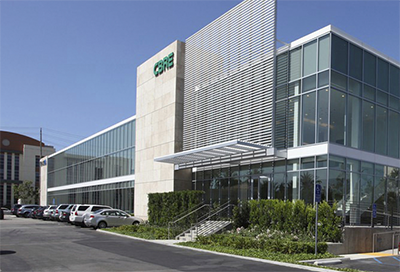CBRE data shows a decline in U.S. industrial real estate availability
Recent data issued by industrial real estate firm CBRE in its U.S. Industrial Availability Index continues to highlight the decline of the average availability rate for United States-based warehouses and distribution centers, with the third quarter rate heading down ten basis points to 7.7, its lowest availability rate going back to 2001.

Recent data issued by industrial real estate firm CBRE in its U.S. Industrial Availability Index continues to highlight the decline of the average availability rate for United States-based warehouses and distribution centers, with the third quarter rate heading down ten basis points to 7.7, its lowest availability rate going back to 2001.
CBRE said that this most recent decline is paced by strong demand again outpacing new supply, which is far from a new trend or pattern, as the rate has fallen in 28 of the past 29 quarters, with the lone exception coming in the first quarter of 2017. And it defines availability as the full amount of space available for lease, which includes vacant space and currently occupied space being marketed for occupation by other users.
For the third quarter, CBRE found that 33 of the U.S. markets it tracks saw industrial availability declines, while 24 markets saw increases, and eight saw no change.
An example of the tight warehouse and distribution center availability is CBRE’s third-quarter net absorption of industrial space, which it views as a “proxy for demand,” came in a 61 million square-feet, which it stated is slightly less than the two-year average of 64 million square-feet, while third-quarter construction completions of 51 million square-feet topped the two-year average for new supply of 47 million square-feet.
“In all, the industrial sector continues to show strong fundamentals, with demand remaining strong and supply steadily catching up to meet demand,” CBRE said. “From a macroeconomic perspective, the continued strength domestic market fundamentals-a labor market that is at or near full-employment, expectations of faster wage growth given the tight labor market, and resilient consumer activity-mean that the industrial sector still has some ways to go.”
CBRE Americas Chief Economist Jeffrey Havsy told Logistics Management that the key drivers for the current average availability rate are the continued strength of the economy and the continued growth of e-commerce.
While economic fundamentals appear to be in a good place, Havsy explained that it speaks to the impact that logistics and supply chain-specific things have on economic momentum.
“The last mile and e-commerce have a huge impact on the strong absorption numbers the past few years,” he said. The solid economy would have led to good absorption numbers, but the change in logistics driven by ecommerce have led to absorption much stronger than it otherwise would have been.”
Havsy added that while there is some more room to run for this current pattern of tight availability to continue, he said that things do appear to be nearing the end of the cycle.
That was driven home in the report, with CBRE saying that as completions have moved past the 50 million square-feet mark twice in the last four quarters, when that happens, on a historical basis, the availability rate has flattened out for some time before increasing.

Article Topics
Latest in Logistics
A buying guide to outsourcing transportation management SKU vs. Item-level Data Visibility: Why it Matters for End-to-End Traceability Key benefits of being an Amazon Business customer with Business Prime USPS cites continued progress in fiscal second quarter earnings despite recording another net loss U.S. rail carload and intermodal volumes are mixed, for week ending May 4, reports AAR New Ryder analysis takes a close look at obstacles in converting to electric vehicles Norfolk Southern shareholders sign off on 10 board of directors nominees More LogisticsAbout the Author
About the Author
Subscribe to Logistics Management Magazine

Find out what the world's most innovative companies are doing to improve productivity in their plants and distribution centers.
Start your FREE subscription today.
May 2024 Logistics Management

Latest Resources














